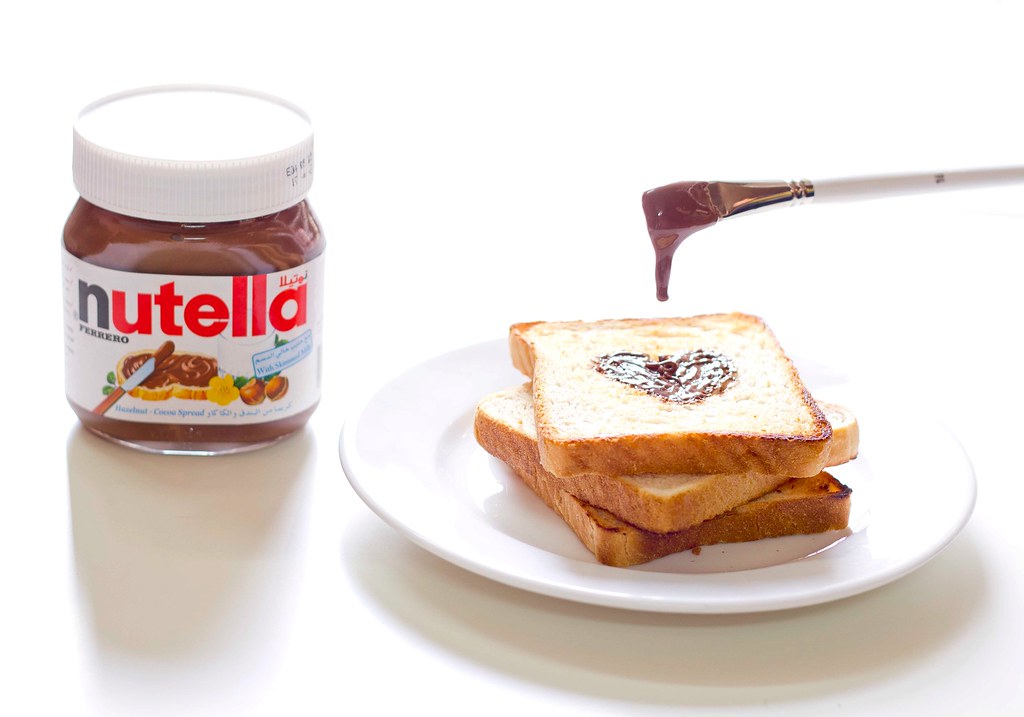How long is it safe to leave can milk sit out before it spoils?
Welcome to our guide on milk shelf life! Whether you’ve accidentally left a glass of milk out on the counter or you’re wondering how long that open carton will last in your fridge, it’s important to know how long milk can safely sit out before it goes bad. In this article, we’ll explore the factors that affect the shelf life of milk, how to properly store it, and signs that indicate it has spoiled. So read on to keep your milk fresh and prevent any unwanted surprises!
When it comes to the shelf life of milk, there are a few key factors to consider. First and foremost, the type of milk you have plays a role. Pasteurized milk, both whole and reduced-fat, has a shorter shelf life than ultra-pasteurized milk. This is because the ultra-pasteurization process involves heating the milk to a higher temperature, killing more bacteria and increasing its shelf life. Additionally, the fat content of the milk can affect its shelf life, with lower-fat milk lasting longer than whole milk.
The temperature at which milk is stored also plays a crucial role in its shelf life. Milk should always be stored in the refrigerator at a temperature below 40°F (4°C) to slow down bacterial growth. Storing milk in the door of the refrigerator, where temperatures can fluctuate, is not recommended as it may cause the milk to spoil more quickly. It’s also important to note that once milk is opened, its shelf life decreases significantly. This is because exposure to air and bacteria in the environment can lead to spoilage.
So, how long can milk sit out before it spoils? Typically, milk should not be left out at room temperature for more than two hours. After this time, harmful bacteria begin to multiply rapidly, increasing the risk of foodborne illness. If you accidentally leave milk out for longer than two hours, it’s best to discard it to avoid any potential health risks. It’s always better to be safe than sorry when it comes to consuming perishable foods!
Understanding Milk Shelf Life
Milk shelf life refers to the amount of time that milk can stay fresh and safe for consumption before it spoils. The shelf life of milk can vary depending on various factors, including the type of milk, the processing method, and how it is stored.
Unopened milk, such as pasteurized milk, typically has a longer shelf life and can remain fresh for up to a week or more when refrigerated at the proper temperature, which is typically around 40°F (4°C). On the other hand, ultra-pasteurized milk or milk alternatives, like almond milk or soy milk, can have an extended shelf life of several weeks or even months when unopened, again if properly refrigerated.
Once opened, milk should be consumed within a certain timeframe, as it can start to spoil due to exposure to air and bacteria. Generally, opened milk should be consumed within 1-2 days for regular pasteurized milk, and within 7-10 days for ultra-pasteurized or plant-based milk alternatives.
Proper storage is key in extending the shelf life of milk. It is important to keep milk in the refrigerator at all times, as higher temperatures can accelerate the growth of bacteria, causing the milk to spoil more quickly. Additionally, it is recommended to store milk in its original container or in an airtight container to prevent contamination and maintain freshness.
It is worth noting that the shelf life provided is a general guideline, and the actual shelf life of milk can vary depending on various factors, such as the brand, processing methods, and individual storage conditions. Therefore, it is always best to check the expiry date and trust your senses for signs of spoilage, such as off odors or visible changes in texture or color, before consuming milk.
Understanding the shelf life of milk can help ensure that you consume fresh and safe milk, minimizing the risk of foodborne illnesses. By following proper storage guidelines and paying attention to expiry dates, you can enjoy milk that is at its best for longer periods.
Factors Affecting Milk Shelf Life
The shelf life of milk can be influenced by several factors. Understanding these factors can help you determine how long milk can be safely stored.
1. Temperature: Milk should always be stored at a cool temperature, ideally below 41°F (5°C). Higher temperatures can promote bacterial growth and spoilage, leading to a shorter shelf life.
2. Packaging: The type of packaging can affect milk’s shelf life. Milk that is stored in opaque, airtight containers can be preserved longer compared to milk stored in clear containers that allow light exposure and increased oxygen contact.
3. Pasteurization: Milk that has been properly pasteurized will generally have a longer shelf life compared to raw milk. Pasteurization kills harmful bacteria, extending the milk’s freshness.
4. Contamination: Any contamination of milk can significantly reduce its shelf life. It is important to handle milk with clean hands and utensils and avoid exposing it to any sources of bacteria or contaminants.
5. Time since packaging: The longer milk sits on the shelf, the shorter its shelf life will be. It is recommended to consume milk within a few days after purchase to ensure maximum freshness.
By taking these factors into consideration, you can ensure that your milk remains safe to consume for as long as possible.
Signs of Spoiled Milk
As milk starts to spoil, there are a few key indicators to look out for:
- Smell: One of the first signs of spoiled milk is a sour or off smell. If your milk smells unpleasant, it is likely no longer safe to consume.
- Appearance: Spoiled milk will often have a lumpy or curdled appearance. If you notice clumps or chunks in your milk, it has likely gone bad.
- Texture: Fresh milk should have a smooth, creamy texture. If your milk feels slimy or grainy, it is spoiled and should not be consumed.
- Taste: The most reliable way to determine if milk is spoiled is by tasting it. If the milk tastes sour or bitter, it has spoiled and should be discarded.
If you notice any of these signs, it is best to err on the side of caution and dispose of the milk. Consuming spoiled milk can lead to illness and should be avoided. Remember to always check the expiration date and store your milk properly to extend its shelf life.
Can You Still Use Expired Milk?
One of the common questions people have about milk is whether it is safe to consume after its expiration date. While it may be tempting to use expired milk if you’re in a pinch, it’s generally recommended to discard it.
Why is it important to pay attention to the expiration date?
The expiration date on milk serves as a guideline for freshness and safety. After the expiration date, the milk may undergo chemical changes, potentially leading to the growth of harmful bacteria. Consuming expired milk can put you at risk of foodborne illnesses.
What should you look for to determine if the milk is still good?
Before using any milk, regardless of its expiration date, it’s essential to do a visual and olfactory inspection. If the milk has clumps, a sour smell, or an off-white color, it’s a sign that it has spoiled and should be discarded.
If the milk appears and smells normal but is past the expiration date, you might consider doing a taste test. However, it’s crucial to proceed with caution as it’s not a foolproof method. If the taste seems off or unusual, it’s best to play it safe and avoid consuming the milk.
It’s worth mentioning that specific types of milk, such as ultra-pasteurized milk, may have a longer shelf life, even after the expiration date. However, it’s always a good idea to follow the guidelines provided by the manufacturer and use your best judgment.
To avoid ending up with expired milk, it’s advisable to practice FIFO (first in, first out) when purchasing and using milk. This means using the milk that expires soonest and ensuring you rotate your supply regularly.
If you find yourself frequently wasting milk due to expiration, you may consider purchasing smaller quantities or opting for shelf-stable milk alternatives. These options have a longer shelf life and can be stored at room temperature until opened.
In conclusion, while it may be tempting to use expired milk, it’s generally best to err on the side of caution and discard it. Pay attention to the expiration date, conduct visual and olfactory inspections, and use your best judgment to ensure you’re consuming safe and fresh milk.
Proper Milk Storage
Proper milk storage is essential for maintaining the quality and safety of milk. Here are some guidelines to follow:
1. Refrigeration
Milk should be stored in the refrigerator at all times. The ideal temperature for storing milk is between 32°F and 40°F (0°C and 4°C). Keeping milk at this temperature slows down the growth of bacteria, ensuring it stays fresh for a longer period.
2. Store in Original Container
Milk should be kept in its original container or in a food-grade, airtight container. Avoid transferring milk to different containers, as this can increase the risk of contamination.
3. Keep Away from Light
Exposure to light can cause the breakdown of vitamins and fats in milk, leading to a decrease in quality. Therefore, it is important to store milk in a dark place or in opaque containers.
4. Avoid Strong Odors
Milk can easily absorb strong odors from other foods in the refrigerator. To prevent this, store milk away from foods with strong odors, such as onions and garlic.
5. Check Expiration Dates
Always check the expiration date before consuming or storing milk. Expired milk can harbor bacteria that can cause foodborne illnesses.
6. Avoid Freezing
Milk is not recommended to be stored in the freezer, as it can cause changes in texture and taste. Freezing can also lead to the separation of water and solids in milk, affecting its overall quality.
By following these guidelines, you can ensure that your milk remains safe and of high quality for a longer period, minimizing the risk of spoilage and foodborne illnesses.
Milk Alternatives for Extended Shelf Life
If you’re looking for milk alternatives that have a longer shelf life than traditional cow’s milk, there are several options to consider. These alternatives can be a great option for individuals who don’t consume dairy or for those who just want a longer-lasting milk option.
Soy Milk: Soy milk is a popular milk alternative that can be refrigerated for up to 7-10 days. It is made from soybeans and has a similar creamy texture to cow’s milk. Soy milk is a good source of protein and can be used in a variety of recipes and beverages.
Almond Milk: Almond milk is another popular milk alternative that has a longer shelf life. It can last up to 7-10 days in the refrigerator. Almond milk is made from ground almonds and has a slightly nutty flavor. It is often used in smoothies, coffee, and baking recipes.
Coconut Milk: Coconut milk is a creamy and rich milk alternative that can last up to 7-10 days in the refrigerator. It is made from the flesh of mature coconuts, and it has a distinct tropical flavor. Coconut milk is commonly used in curries, soups, and dessert recipes.
Oat Milk: Oat milk is a dairy-free and nut-free milk alternative made from oats. It can last up to 7-10 days in the refrigerator. Oat milk has a mild and slightly sweet flavor, and it is a popular choice for lattes, smoothies, and baking recipes.
Rice Milk: Rice milk is a milk alternative derived from rice grains. It typically has a thinner consistency compared to other milk alternatives and can last up to 7-10 days in the refrigerator. Rice milk is often used as a dairy substitute in recipes and beverages.
Remember to always check the expiration dates and storage recommendations on the packaging of these milk alternatives to ensure their freshness and quality.
Whether you’re lactose intolerant, allergic to dairy, or simply looking for a milk that lasts longer, these milk alternatives can be a great option to consider. They offer a variety of flavors and textures, making them suitable for different recipes and preferences.
“FAQ:” How long can milk sit out
How long can milk be left unrefrigerated?
Milk should not sit unrefrigerated for an extended period. It’s generally safe for up to two hours, but this timeframe can vary depending on factors like temperature and type of milk.
What happens if milk is left unrefrigerated?
If milk is left unrefrigerated for too long, it can spoil due to the growth of spoilage bacteria. This can result in a sour taste, sour odor, and potential health risks.
Is it safe to drink milk left unrefrigerated?
It’s not advisable to drink milk that has been left unrefrigerated for an extended period, as it can lead to food poisoning and gastrointestinal issues.
How can you tell if milk has gone bad?
Spoiled milk often develops a sour taste, sour odor, and may show signs of curdling. If it smells off or has an unusual texture, it’s best not to consume it.
What kind of milk is more prone to spoilage?
All types of milk, including skim milk and lactose-free milk, can spoil if left unrefrigerated for an extended time. Factors like temperature and handling play a role in the spoilage process.
How many days past the sell-by date is milk still safe to consume?
Milk can last a day or two past its sell-by date, but it’s crucial to assess its freshness by checking for any signs of spoilage, such as an off smell or sour taste.
Can you separate spoilage bacteria from milk?
Spoilage bacteria can proliferate in milk, leading to its deterioration. Once this occurs, it’s challenging to separate the bacteria from the milk, making it unsafe to consume.
What temperature is considered safe for milk products?
Milk products should be stored below 40 degrees Fahrenheit to ensure their safety and prevent the growth of harmful bacteria.
Does skim milk differ in its susceptibility to spoilage?
Skim milk is not exempt from spoilage, and it can go bad if left unrefrigerated for too long. The risk of spoilage is similar to that of other types of milk.
Can sour cream be affected by the same spoilage issues as milk?
Yes, sour cream can be affected by spoilage issues similar to milk. It can develop a sour taste, sour odor, and should not be consumed if it shows signs of spoilage.




